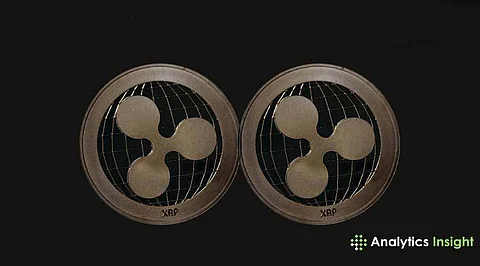

XRP stands among the most prominent payment-focused cryptocurrencies that were established through the XRP Ledger (XRPL) foundation. Ripple dedicates its effort to cross-border payment development while XRP maintains its position as the fundamental token of the Ripple network. Since its price tracking began, XRP has endured as a robust payment coin despite its competitors, Bitcoin (BTC) and Ethereum (ETH). The withdrawal of Google’s AI weapons pledge directed tech world attention elsewhere but did not impact XRP’s cryptocurrency market performance.
The value of XRP moves in relation to time yet remains stable as one of the premier cryptocurrencies for payments. The widespread adoption of XRP depends on its high transaction speed and minimal costs for each operation. The XRPL features quick transaction processing and zero or minimal fees, thus facilitating efficient cross-border money transfers. XRP's transaction efficiency distinguishes it from Bitcoin and Ethereum because it performs faster with lower fees.
The blockchain operates through Proof-of-Association (PoA) which uses specific nodal validators for security and decentralization as a substitute for energy-consuming mining operations. XRP maintains its status as an economical solution for payment processing systems because of this method. XRP tokens are a key component that enables quick currency settlements and liquidity transactions between institutions and remittance services, so institutions widely adopt the token. XRP sustains its position in worldwide financial systems because of its efficient transaction capability regardless of market uncertainties.
Due to distinctive market handling practices investor behavior toward XRP price trends stands apart from that of Bitcoin and Ethereum. The two largest cryptocurrencies, Bitcoin and Ethereum, exist mainly as value-storage instruments, whereas their payment features remain supplementary. The networks struggle with high energy usage and expensive transaction fees, but XRP avoids facing these problems simultaneously.
XRP shows historically steadier price movements than Bitcoin and Ethereum since it powers practical financial operations through RippleNet. The demand for XRP remains consistent because RippleNet uses the token to provide liquidity capabilities alongside its cross-border settlement infrastructure.
XRP serves more purposes than just retail market investors because institutions actively utilize its capabilities. Major corporations, including Santander and American Express deliver real-time cross-border payment services to financial institutions through RippleNet. XRP's transaction functionality keeps it tightly bound to traditional financial operations since Bitcoin and Ethereum maintain their decentralized speculative characteristics.
The future success of XRP depends on two factors: the expansion of RippleNet platforms and the wide adoption of XRP-based products like On-Demand Liquidity (ODL). XRP's adoption by institutions for payment and liquidity solutions ensures strong market trends, which differentiate it from Bitcoin and Ethereum because they are more dependent on store-of-value narratives.
